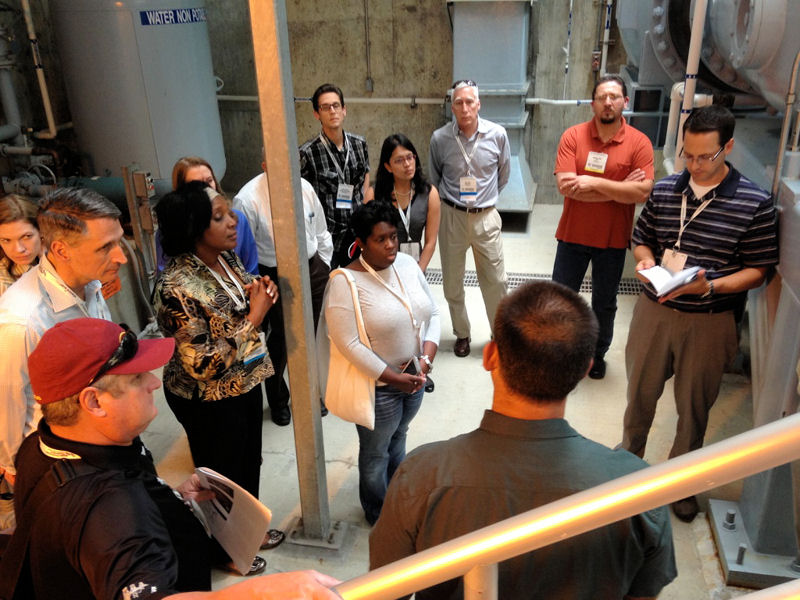
A total of 58 people participated in two tours held during the Water Environment Federation (WEF; Alexandria, Va.) Collection Systems 2013 Conference. Photo courtesy of Marco J. Palilla, Collection Systems 2012 Conference tour coordinator.
In June, the Water Environment Federation (WEF; Alexandria, Va.) hosted the Collection Systems 2013 Conference at the Sacramento (Calif.) Convention Center to educate water professionals about improving the effectiveness of combined and separate sanitary sewer collection systems. Attendees learned about different methods for planning, design, and construction and explored alternative delivery methods.
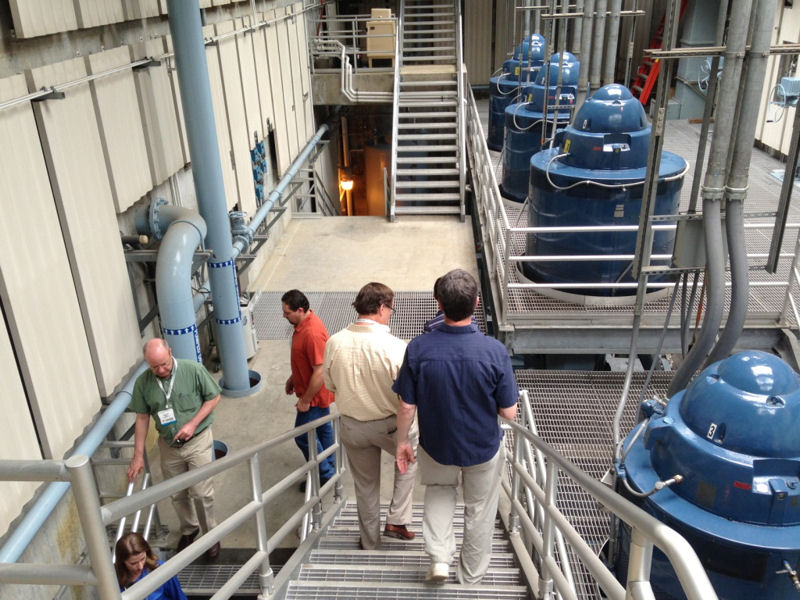
The tour titled Sacramento’s Combined Sewer System — Operating the Rehabilitating a Gold Rush Era Collection System showed participants City of Sacramento’s combined sewer system. Photo courtesy of Palilla.
“Attendees were able to learn about upcoming new technologies and trends in our industry related directly to wastewater collection systems,” said Bruce Corwin, chairman of WEF’s Collection Systems Specialty Conference Committee and co-chair of the Sacramento conference. “They also got to network with colleagues from other parts of the country and got new ideas for their day-to-day work activities. I not only gained satisfaction in seeing the conference being a success but technical knowledge in all sessions I attended.”
A total of 448 people attended the conference, which included a workshop on infiltration and inflow; an opening general session that discussed the history of Sacramento and its wastewater system; and a technical program with 12 sessions, two tours, and exhibits, Corwin said.
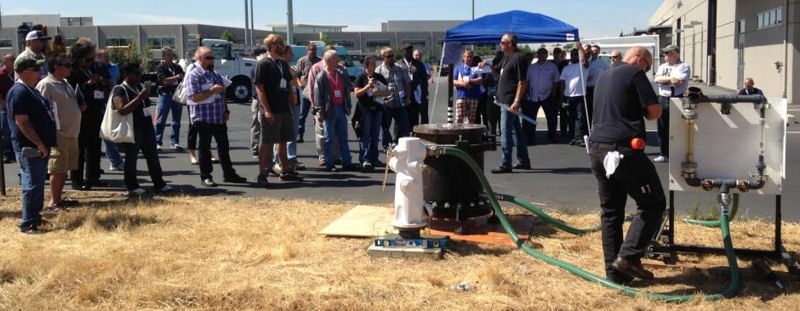
The tour Know Your Flow — Saving Big $$$ and Making Your Regulator Happy included a demonstration of a sanitary sewer overflow simulator. Photo courtesy of Palilla.
The two conference tours were a draw for many attendees.
“The tours are specifically designed to show people local projects or processes that might be of interest to the participants’ community,” Corwin said.
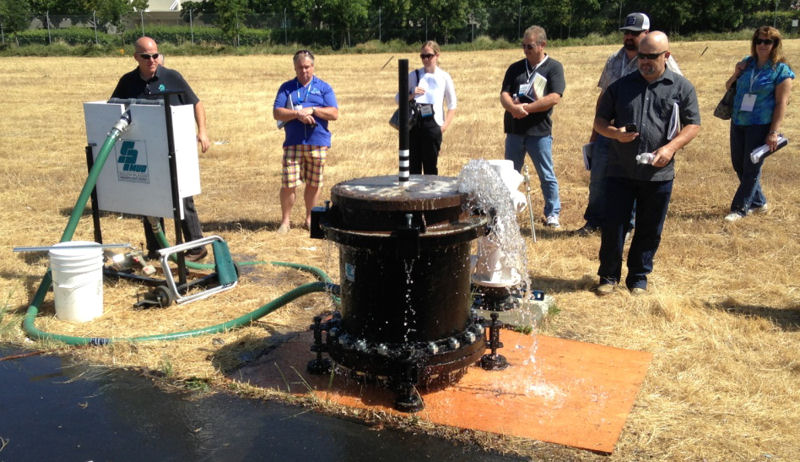
Tours were designed to provide participants with hands-on education about local projects and processes that may be applicable in other locations. Photo courtesy of Palilla.
Primarily, tour participants see how other utilities handle regulatory and operational challenges that provide information and networks to help participants handle similar challenges at their own utilities in the future, explained Marco J. Palilla, conference tour coordinator.
The first tour, Know Your Flow — Saving Big $$$ and Making Your Regulator Happy, took participants to the Sacramento Area Sewer District Quality Control Lab. Participants learned how the district calibrates and maintains hundreds of flowmeters. This lab enables staff to simulate real-world hydraulic conditions. Participants also learned about spill estimation with a demonstration of a sanitary sewer overflow simulator that allows control of water through a manhole frame.
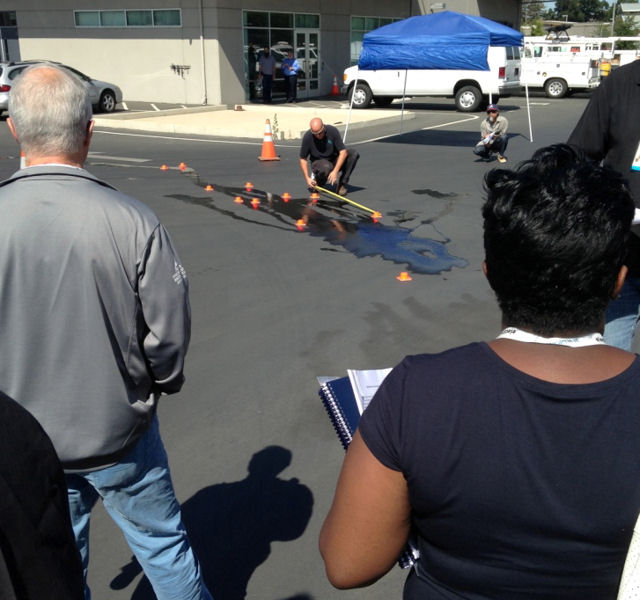
Participants watch a spill estimation demonstration during the Know Your Flow — Saving Big $$$ and Making Your Regulator Happy tour. Photo courtesy of Palilla.
“Attendees learned that there is good science behind accurately estimating flows from manholes and that if the process is well-defined and documented, the estimates can be repeated,” Palilla said. “Most tour attendees were from parts of the United States that did not require spill estimation to such a high level of accuracy. They were amazed at the technology and science behind this effort,” he said.
The second tour, Sacramento’s Combined Sewer System — Operating the Rehabilitating a Gold Rush Era Collection System, took participants to the City of Sacramento’s combined sewer system.
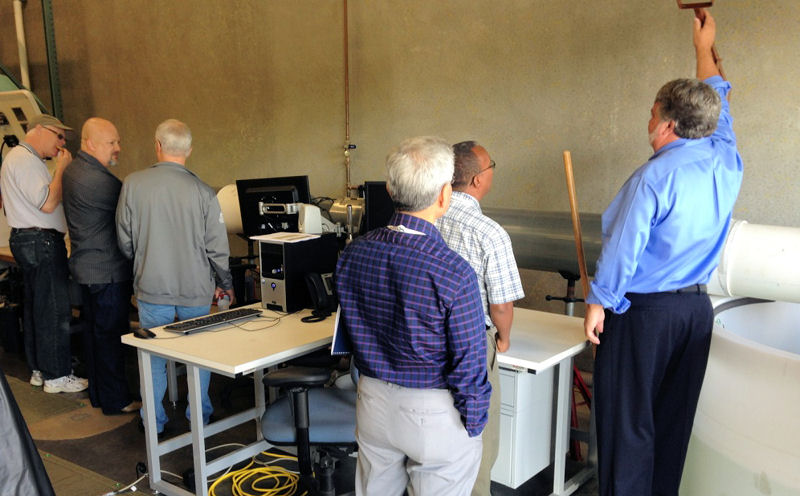
Know Your Flow tour participants learn how Sacramento Area Sewer District Quality Control Lab calibrates and maintains hundreds of flowmeters. Photo courtesy of Palilla.
“Tour attendees learned how the city manages their combined sewer and stormwater system that serves the downtown area,” Palilla said. “Using innovative pumping, storage, and treatment facilities, the city avoids discharges to the Sacramento River during major storm events.”
Attendees were impressed at how the city captures storm and sewer flows and directs them to appropriate facilities to avoid discharge into the Sacramento River, Palilla added.
Next year’s conference, Collection Systems 2014: Collection on the Chesapeake, is scheduled to be held March 11 to 14 at the Baltimore Convention Center.
— Jennifer Fulcher, WEF Highlights








August 7, 2013
Featured, WEF Resources & Efforts